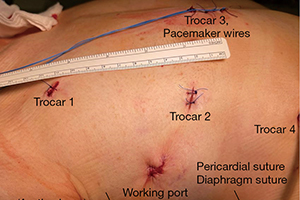Robotically assisted mitral valve surgery—experience during the restart of a robotic program in Germany
Abstract
Background: Following the first robotic-assisted mitral valve operations in Paris and Leipzig, the era of this innovative technique expired after a few years in Germany. At that time, the main arguments against robotic surgery within the German cardiac surgical community were low cost effectiveness and operative time utilization. Encouraged by favorable results, we re-started our robotic-assisted cardiac program as the first and only center in Germany in 2019.
Methods: Between July 2019 and December 2021, 329 patients underwent robotic-assisted operations using the daVinci Xi system, including mitral and coronary operations, myxoma resection, atrial septal closure and stand-alone atrial ablation. Of these, 182 patients underwent mitral valve repair (MVR). Isolated MVR was performed in 96 patients (isolated mitral group, IMG) and 86 underwent concomitant operations, such as tricuspid valve repair, Cox-Maze IV, pulmonary vein isolation (PVI) and left atrial appendage (LAA) closure (complex mitral group, CMG). For cost analysis, the InEK calculation for 2020 was used.
Results: MVR was successful (MR ≤I°) in all patients. Patients in the IMG had a hospital mortality of 1.0% (O/E ratio 0.69) and stroke rate of 2.0%. Four patients (4.0%) required conversion to sternotomy and 6 patients (6.0%) needed re-exploration for bleeding. Mortality was 3.5% (O/E ratio 0.74) in the CMG and stroke rate 2.3%. The conversion and bleeding rates were 4.6% each, respectively. The steep learning curve resulted in significant reduction of operating times greater than 25% in the IMG. Comparing the results of robotic-assisted procedures to minimally-invasive mitral surgeries (MIMS) in 2020, a reduction in length of hospital stay of almost 25% resulted in significantly lower costs for the medical service and medical infrastructure. However, within the German health service, overall cost for robotic-assisted procedures were more expensive compared to MIMS by 5% due to higher material costs.
Conclusions: The re-establishment of robotic mitral valve surgery in Germany was successful with comparable results to MIMS in terms of mortality and morbidity. Robotic-assisted cardiac operations resulted in accelerated postoperative recovery with significant shortening of the hospital length of stay. The avoidance of liver injury is one focus for the future.
Cover






